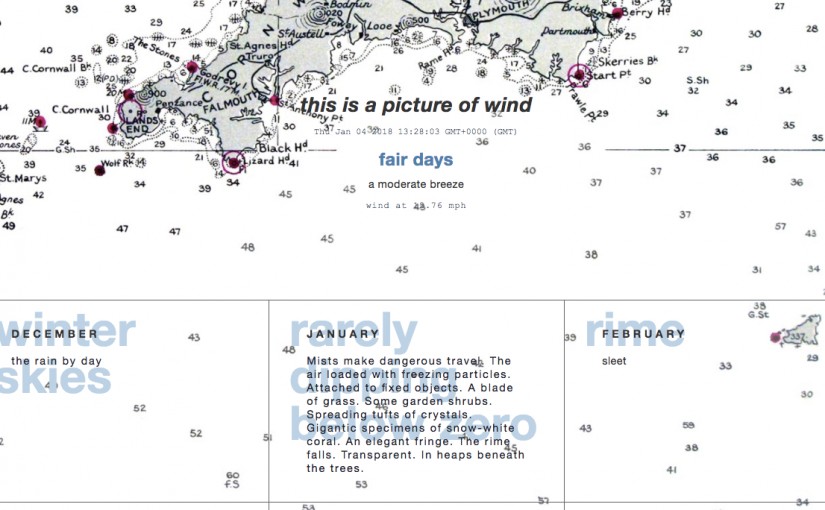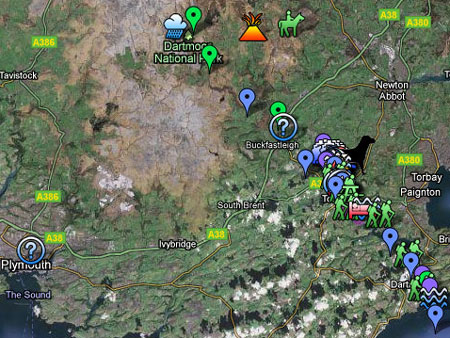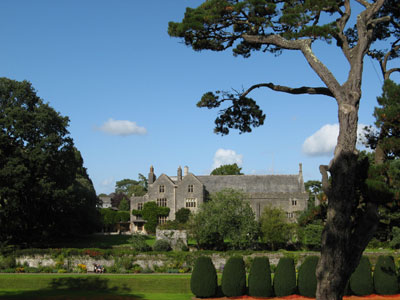On a clear day, and there aren’t very many of those, from a spot at the top of the drive you can see south to the sea. This is confusing, because the sea appears to float above a wave of hills. A thin strip bluer than the sky.
Lower down the drive, a view of the River Dart opens north to Totnes. I would say this driveway boasts the best views in England, but so far it’s the only driveway in England I’m familiar with.
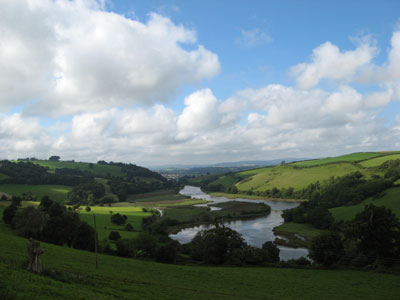
[The Dart from the Sharpham Drive, North to Totnes]
Sometimes I lie awake and think about the river carving its path through the night, north to Totnes, south to Dartmouth. North to the Dartmoor, south to the sea.
Amanda said, For some reason I imagine if you’re thinking about it you can hear it and the thought of the sound of a river makes me happy today.
Linda said, I went for a walk by the ocean yesterday, the sound and smell makes me happy, too.
I can’t hear the river from the house, but I can see it from the bedroom. Last week there were gale force winds and rain for two days. When the storm stopped in the night the silence was so sudden it woke me. I lay awake and thought about the rain-swollen river opening its muddy mouth to the sea.
On Sunday I said, I’m going to the seaside to see the sea.
Sonia said, Please do sell some sea shells.
I confessed to Sonia that I was sorely tempted to wheel a wheelbarrow through streets wide and narrow singing cockles and mussels alive alive oh. But, this being Devon, there were no streets wide, only narrow.
Nora said, How bout a beautiful pea-green boat?
There are Owls roosting all up and down the River Dart. But no Pussycats.
And I am a Carpenter, after all. As such, I assured Nora, when the Walrus said, “The time has come to talk of many things,” I immediately brought up the subject of the beautiful pea-green boat, but he kept going on about shoes and ships and sealing-wax, cabbages and kings and why the sea is boiling hot and whether pigs have wings.
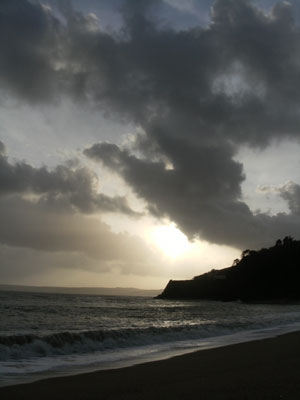
[The sea at Blackpool Sands, South to Slapton Ley]
This photo of Blackpool Sands came out kind of dark. Possibly because the beach has black in its name. And, although the sun was shining on the sea, shining with all his might, this was odd, because it was the middle of the night.
The Walrus and I were wearing wellingtons and walking close at hand; we wept like anything to see such quantities of sand.
Nora wondered, as did the Walrus, ..if seven maids with seven mops swept it for half a year, do you suppose that they could get it clear?
Wait, I said to Nora. Is one of those maids my Bonnie? My Bonnie lies over the ocean, and, if you’ve seen her, could you please bring back, bring back, bring back my Bonnie to me, to me?
The Bonnie bit may seem a bit tacked on after that Walrus and Carpenter bit, but Amanda, Linda, Sonia and Nora all lie over the ocean, and that’s what made me think of it.
. . . . .

